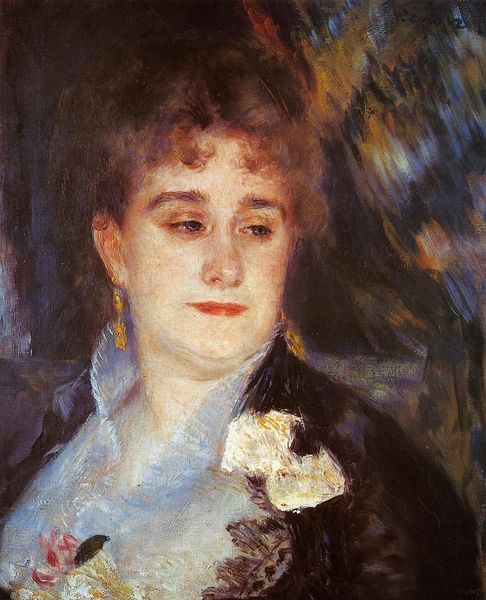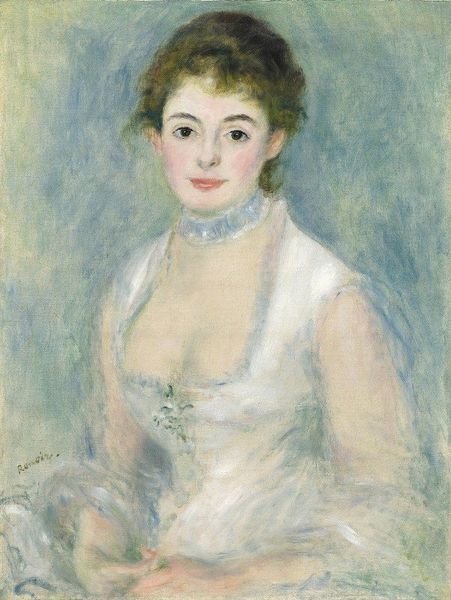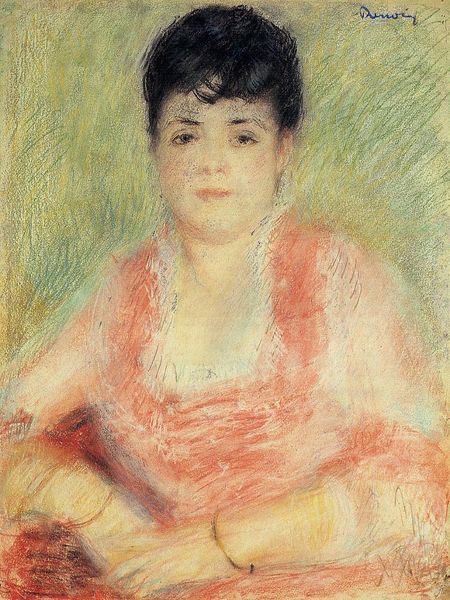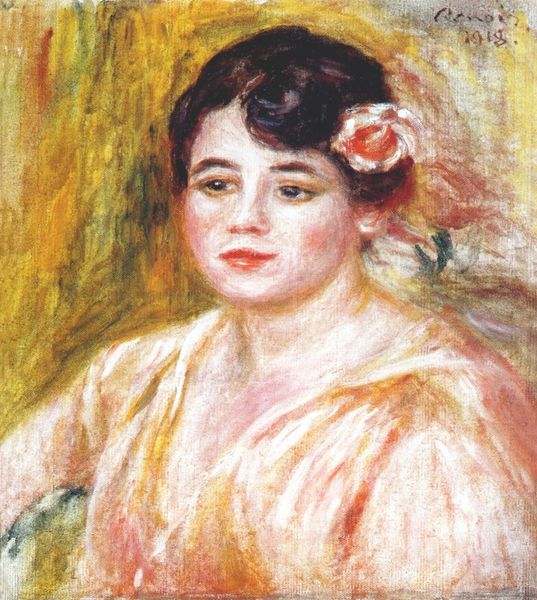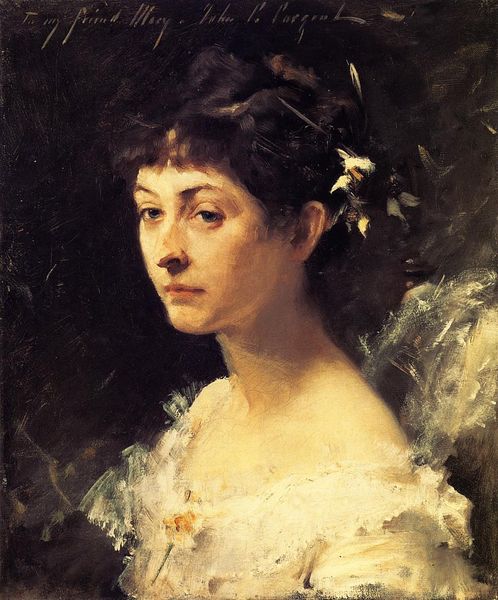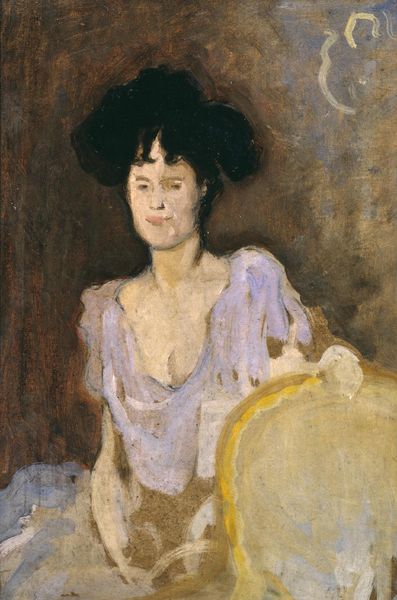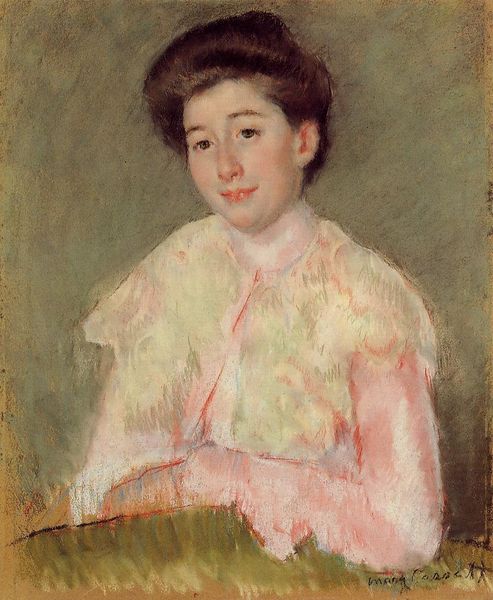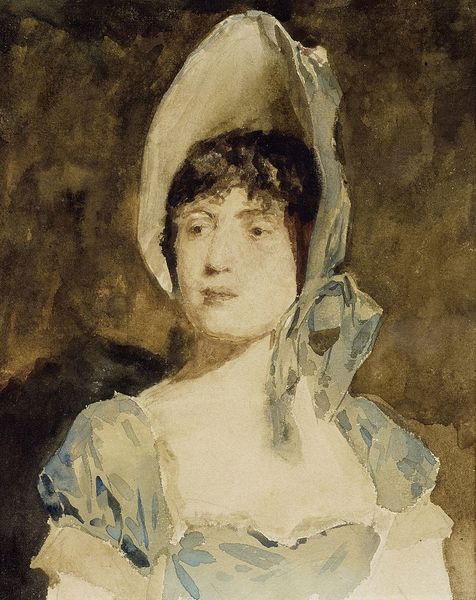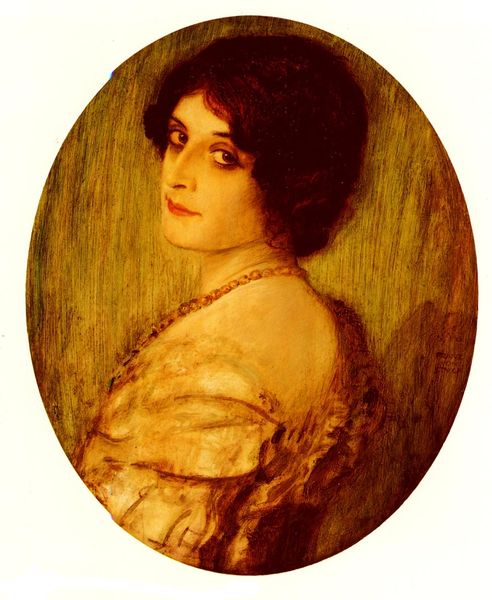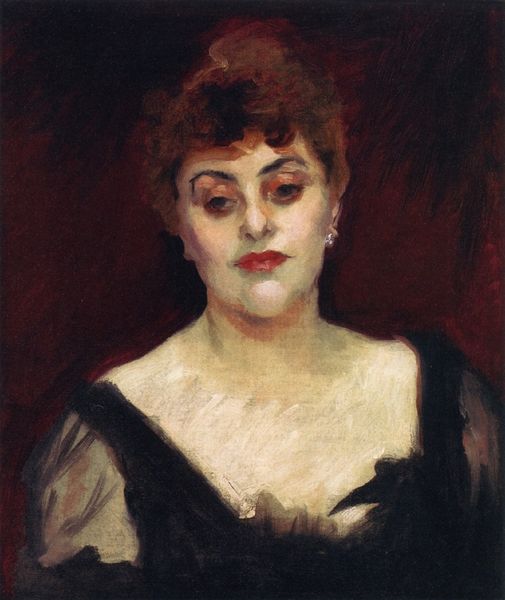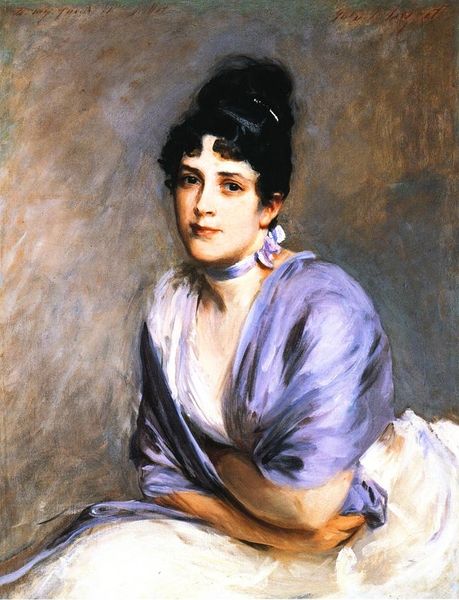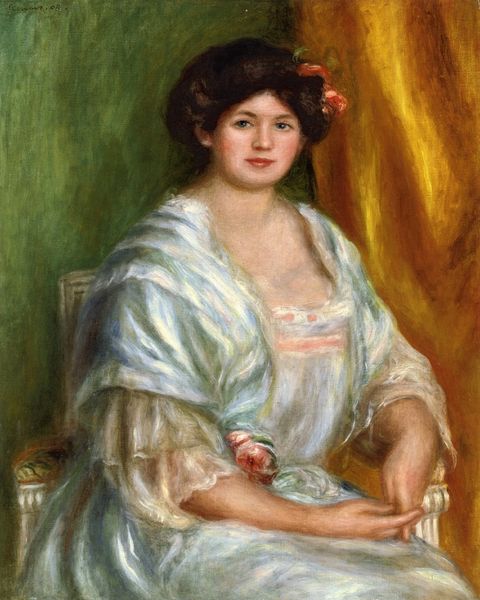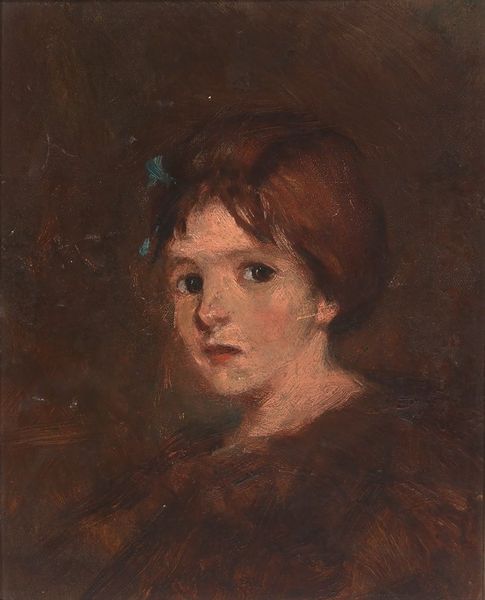
painting, oil-paint
#
portrait
#
painting
#
impressionism
#
oil-paint
#
figuration
#
academic-art
Copyright: Public domain
Editor: We're looking at Pierre-Auguste Renoir's "Head of a Woman," painted in 1876. The oil paint creates a soft, almost dreamlike quality to her features. I find the gaze quite direct. What do you see in this piece, especially considering the context of Renoir's career? Curator: It's a captivating image, isn't it? While Renoir is often celebrated for his idealized depictions of women, bathed in light and pleasure, I think we need to examine this portrait through a more critical lens. This painting exists within a societal framework where women's identities were largely defined by their roles in relation to men. Consider how her "gaze," as you mentioned, operates. Is it truly direct, or is it filtered through the male gaze inherent in 19th-century portraiture? How much agency does she really possess within the frame? Editor: That's a compelling point. So, it’s not just about the beauty, but about questioning who gets to define that beauty and for whom? Curator: Exactly! Think about the artistic conventions of the time. The Impressionists were rebelling against academic art, but even within that rebellion, certain power structures persisted. Who were the artists being showcased? Who were their patrons? Whose perspectives were privileged? It’s crucial to interrogate these dynamics when we analyze art, even seemingly simple portraits. And consider her social standing: How might that have impacted her choices and freedoms, including how she was portrayed? Editor: So, by questioning these things, we can reveal a whole layer of meaning that might not be immediately apparent? Curator: Precisely. By looking beyond the surface, we can uncover the complex social and political narratives embedded within the artwork, inviting a deeper understanding of both the art and the world it reflects. Editor: I'll definitely keep these power dynamics in mind as I keep studying art history.
Comments
No comments
Be the first to comment and join the conversation on the ultimate creative platform.
